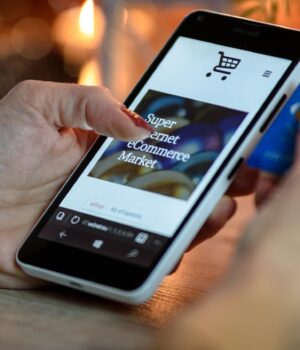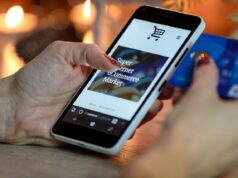Launching an online store has never been easier—or more overwhelming. The sheer volume of available tools promises to simplify the process but often creates decision paralysis for new entrepreneurs. The right toolkit in 2025 doesn’t just help you set up shop; it anticipates roadblocks, automates tedious tasks, and scales alongside your growing business. Forget generic lists—these are the battle-tested solutions real store owners use to go from idea to first sale in record time.
Shopify remains the foundation for most successful stores, but its 2025 iteration goes far beyond basic e-commerce. Their new “AI Store Builder” transforms product photos and a brief description into a fully designed store in under ten minutes—a jewelry designer in Austin had her store live before her first batch of handmade rings arrived from the caster. What makes Shopify indispensable is its “Commerce OS,” which connects every aspect of your business from inventory to marketing. Their “Smart Inventory” system now predicts restocking needs based on sales velocity and supplier lead times, preventing both overstocking and missed sales.
Canva Pro has become the secret weapon for creating professional product visuals without a design budget. The 2025 “Product Studio” automatically removes backgrounds, enhances image quality, and generates lifestyle scenes for your products. A candle maker in Seattle uses Canva’s AI to create cohesive product photos across her entire line—despite shooting each piece separately on her kitchen counter. The “Brand Hub” stores your colors, fonts, and logos, applying them instantly to new designs while maintaining perfect consistency across packaging, social media, and ads.
Klaviyo’s email marketing platform now predicts which customers will buy again (and when) with unsettling accuracy. Their 2025 “Revenue AI” identifies micro-segments in your audience, automatically sending tailored campaigns that convert. A pet accessories store owner in Miami saw a 300% ROI increase after implementing Klaviyo’s suggested send times—turns out her customers open emails at 6:17 AM, not the industry-standard 10 AM. The platform’s new “SMS Shop” feature turns text messages into a shoppable experience, with customers browsing entire collections via interactive messaging.
ShipStation has evolved from a simple shipping tool to a full logistics command center. Their 2025 “Smart Fulfillment” system compares carrier rates in real-time, considering not just price but delivery speed and reliability for each zip code. A vintage clothing reseller in Chicago saved 22% on shipping by letting ShipStation dynamically choose between USPS, UPS, and regional carriers based on package size and destination. The “Returns Portal” automates the entire reverse logistics process—customers initiate returns, print labels, and even select replacement items without store owner involvement.
QuickBooks Commerce (formerly TradeGecko) solves the inventory nightmares that sink growing stores. Their 2025 “Unified Stock” syncs inventory across online stores, marketplaces, and physical locations while predicting demand spikes. A gourmet food retailer in Portland prevented $15,000 in wasted inventory by acting on QuickBooks’ alert about slowing truffle oil sales before his next order deadline. The “Automated Reordering” feature now negotiates with suppliers via AI, securing better terms than most human buyers achieve.
PageFly is no longer just a Shopify page builder—it’s become the operating system for high-converting store design. Their 2025 “AI Optimizer” runs continuous A/B tests on your product pages, automatically implementing the winning variations. A skincare entrepreneur in Los Angeles saw conversion rates jump 40% when PageFly redesigned her product tabs based on heatmap analysis. The new “Dynamic Sections” adapt page layouts based on visitor behavior—returning customers see different social proof than first-time visitors, all without manual rules.
Gorgias has transformed customer service from a cost center to a revenue generator. Their 2025 “AI Agent” handles 65% of routine inquiries while seamlessly escalating complex issues to humans. A watch microbrand in New York increased average order value by 22% after Gorgias began suggesting complementary products during support chats. The platform’s new “Sentiment Radar” detects frustration before customers complain, triggering recovery offers that preserve relationships.
Printful’s on-demand printing now extends far beyond t-shirts to include custom-manufactured products. Their 2025 “Instant Samples” program uses augmented reality to show physical product mockups before production—a graphic designer in Denver finalized her notebook designs without waiting for physical proofs. The “AI Color Match” ensures your designs render perfectly across different materials, solving the age-old problem of colors appearing differently on cotton versus polyester.
TikTok Shop has become the customer acquisition channel that outperforms Facebook and Google for many new stores. Their 2025 “Shop AI” analyzes viral trends to suggest products likely to take off—a board game creator in Toronto sold out her first print run after TikTok identified her game as perfect for the “cozy gaming” trend. The integrated “Live Shopping” tools turn any smartphone into a broadcast studio, with real-time inventory updates during streams.
Zapier remains the invisible engine connecting your entire tech stack. The 2025 “Smart Zaps” now anticipate needed workflows before you do—when a new high-value customer appears in Shopify, Zapier can automatically create a tailored Klaviyo segment and schedule a personalized thank-you video from you. A plant subscription service in Atlanta automated 90% of their operations this way, handling everything from shipment notifications to soil moisture reminder emails.
What separates these tools from the thousands of alternatives is their symbiotic relationship—they’re designed to work together seamlessly, creating a system greater than the sum of its parts. A candle business using this stack could:
- Design professional product images in Canva
- Upload to a Shopify store built with PageFly
- Sync inventory across channels with QuickBooks
- Automate email flows in Klaviyo based on purchase behavior
- Fulfill orders via Printful and ShipStation
- Handle customer service through Gorgias
- Drive viral sales through TikTok Shop
- Connect everything effortlessly with Zapier
The financial barrier to entry has never been lower. Most tools offer free trials or freemium plans, with costs scaling as your business grows. A college student in Ohio launched her sticker store using free tiers of Canva and PageFly, upgrading only after hitting 50 sales per week.
Security features have matured to enterprise levels across these platforms. Two-factor authentication, SOC 2 compliance, and automatic backups come standard—a far cry from the Wild West days of early e-commerce. A jewelry seller in San Francisco sleeps peacefully knowing her customer data is as secure in Shopify as it would be in a Fortune 500 CRM.
The true power of this toolkit lies in its learning curve—or lack thereof. Where early e-commerce required weeks of setup, these 2025 solutions have “zero to launch” timelines measured in days. A retired couple in Arizona went from antique collectors to online sellers in 72 hours using Shopify’s AI setup and Printful’s fulfillment.
Analytics have evolved from confusing dashboards to actionable insights. Each platform now explains data in plain language: “Customers who see your product video are 3x more likely to buy” or “Your best-selling color is understocked by 18 units based on current trends.” A backpack designer in Vermont changed her entire production schedule based on these real-time alerts, avoiding both overproduction and stockouts.
The future-proof nature of these tools gives store owners an unfair advantage. As augmented reality shopping, voice commerce, and AI personalization become mainstream, platforms like Shopify and PageFly automatically incorporate these features—no need for expensive rebuilds. A tea merchant in Boston added AR “smell previews” to her product pages with a single toggle switch.
What emerges is clear: launching an online store in 2025 isn’t about piecing together disparate tools, but orchestrating a symphony of specialized platforms that handle the heavy lifting while you focus on products and customers. The difference between struggling alone and selling successfully comes down to choosing solutions that work as hard as you do—and these are the ones proving their worth in real stores every day.
The most successful new merchants aren’t necessarily the most tech-savvy—they’re the ones who leverage these tools to compete like established brands from day one. With the right stack, your small operation can deliver experiences that rival Amazon’s convenience, Apple’s design, and local boutiques’ personal touch—all without a warehouse, IT department, or massive budget. That’s the 2025 e-commerce revolution in action.







